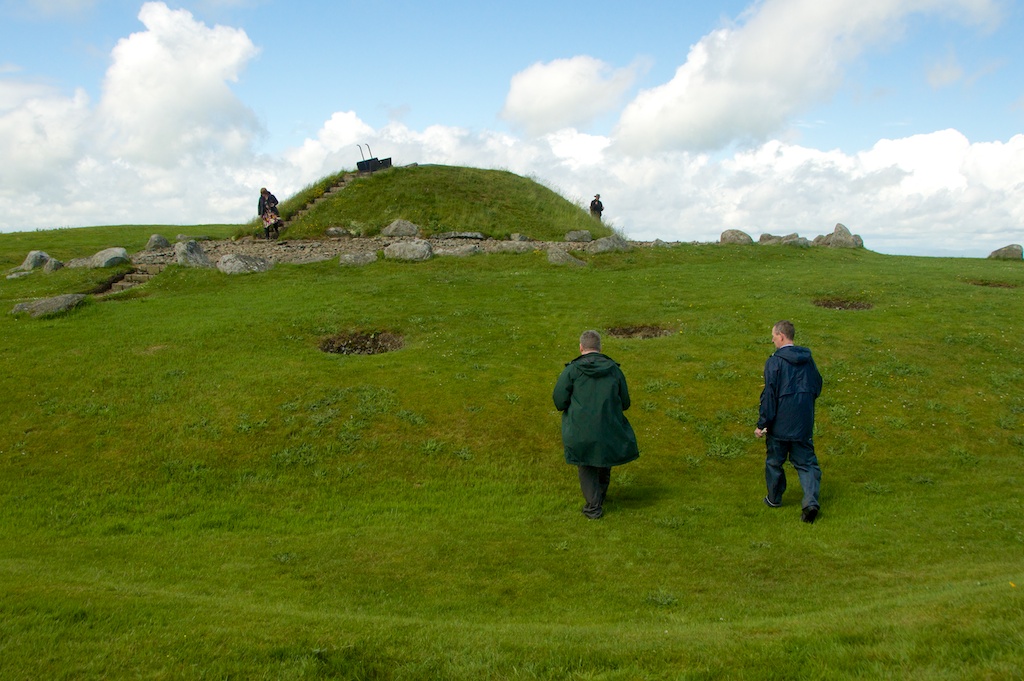
Dowsing at Torphichen and Cairnpapple
I’ve always been fascinated by the art of dowsing. To me, it seemed to hold the answers to a lot of questions. Was a stone circle, for example, located at a key point in the earth’s energy field? Was a church deliberately placed on a hilltop because it was on a ley line, and did it disguise a more ancient site, one that contained a blind spring or a well? And more curiously still, did these places actually affect the earth’s energy, simply by being there – and are they still doing it?
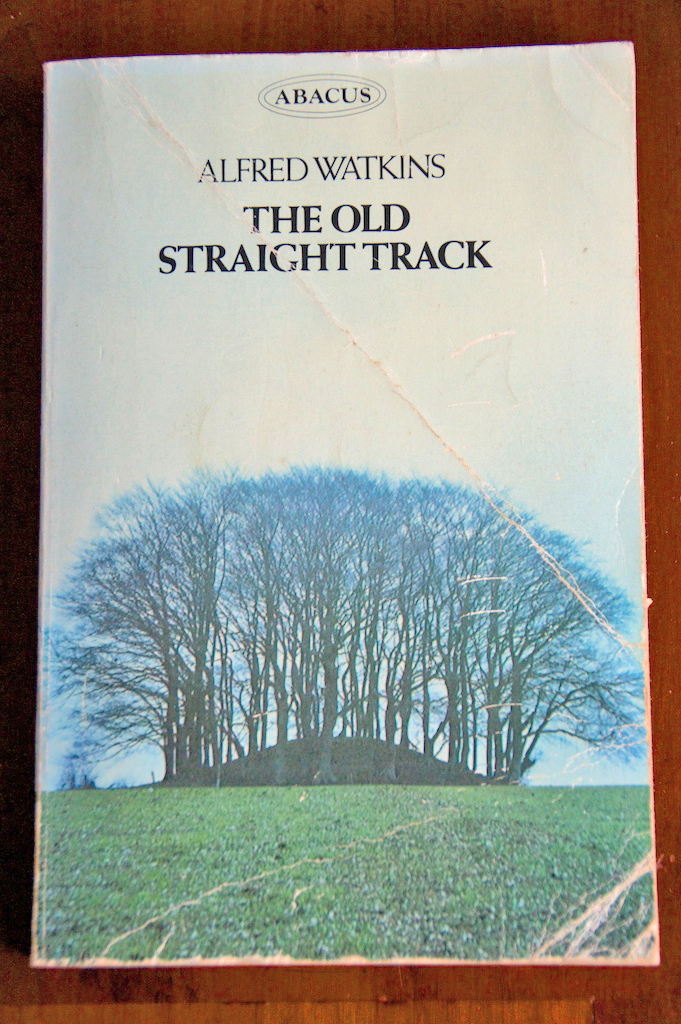 I’m a long-standing fan of Alfred Watkins, whose book ‘The Old Straight Track’ changed my perception of the landscape forever; and of Guy Underwood, author of ‘The Pattern of the Past’, who taught himself the skill of dowsing and was among the first to map out the energy lines around ancient sites in great detail. The way in which they interpreted landmarks and buildings has always resonated with me at a very deep level.
I’m a long-standing fan of Alfred Watkins, whose book ‘The Old Straight Track’ changed my perception of the landscape forever; and of Guy Underwood, author of ‘The Pattern of the Past’, who taught himself the skill of dowsing and was among the first to map out the energy lines around ancient sites in great detail. The way in which they interpreted landmarks and buildings has always resonated with me at a very deep level.
So when I finally got the chance to try some dowsing, I couldn’t say no, could I? Besides, it was all happening just down the road!
 The two-day course on 27th and 28th June was held in Torphichen, West Lothian, and it was organised by Grahame Gardner of Western Geomancy. The activity was focused on two places: Torphichen Preceptory, which I’ve already written about here on The Hazel Tree, and Cairnpapple Hill, where there is a Bronze Age burial chamber and traces of a Neolithic henge.
The two-day course on 27th and 28th June was held in Torphichen, West Lothian, and it was organised by Grahame Gardner of Western Geomancy. The activity was focused on two places: Torphichen Preceptory, which I’ve already written about here on The Hazel Tree, and Cairnpapple Hill, where there is a Bronze Age burial chamber and traces of a Neolithic henge.
Gathered in the village hall on the Saturday morning were 13 ‘students’, a roughly equal mix of men and women. Most of them already had some kind of dowsing experience, and I was one of only two who had none at all. I do, however, practise reiki, and so the concept of working with energy wasn’t entirely unfamiliar.
After watching a slide show which gave us a thorough grounding in the history and uses of dowsing, we equipped ourselves with our rods of varying sizes and headed hopefully in the direction of the playing field. Here, Grahame lost no time in flagging out the route of an underground water course and other energy lines, so that we could practise ‘finding’ them. Across the road, a lady watched from the front window of her house. Luckily, I couldn’t see her expression.
This is the principle: you carry your two L-shaped rods with the long ends pointing straight out in front of you, and parallel to each other. When you walk over an energy line, they generally respond by either crossing over, or moving outwards. The action is slightly different for everyone – you have to work out your own positive response, and then trust it. You don’t always need two rods – sometimes one is sufficient. I also learned how to use a pendulum, to answer questions before and during the dowsing activity. At times Grahame was working with an aurameter, which is designed to be even more sensitive.
If there’s one thing to bear in mind when you’re dowsing, it’s this: don’t over-think it. If you walk confidently and with an open mind, you’ll get a firm and consistent response. It took a few minutes for me to get my head around this, and then I was surprised to see that my rods crossed, time and again, right on the lines but without any prompting – and even with my eyes shut. It was a lovely, friendly group and I was helped by a couple of members who just gave me the boost of confidence I needed to stop doubting and start dowsing!
After that, we moved on to the graveyard in Torphichen, where two energy lines, a ‘male’ and a ‘female’, both enter the Preceptory and converge in the south transept. Don’t get carried away with thinking that I found this out myself – this is what Grahame told us! But before we could even get to them, our attention was taken by an old yew tree, apparently standing on a blind spring. (A blind spring is a rising source of water which never reaches the surface but radiates out in different directions below ground.) Several of the more experienced dowsers had already discovered a vortex around the tree, and even visually I could see that one of the smaller branches had doubled up on itself in an attempt to find the water. I approached the tree with two rods, and was astonished when they both started spinning quite fast. It was a strong and positive reaction. For me, no more proof was needed.
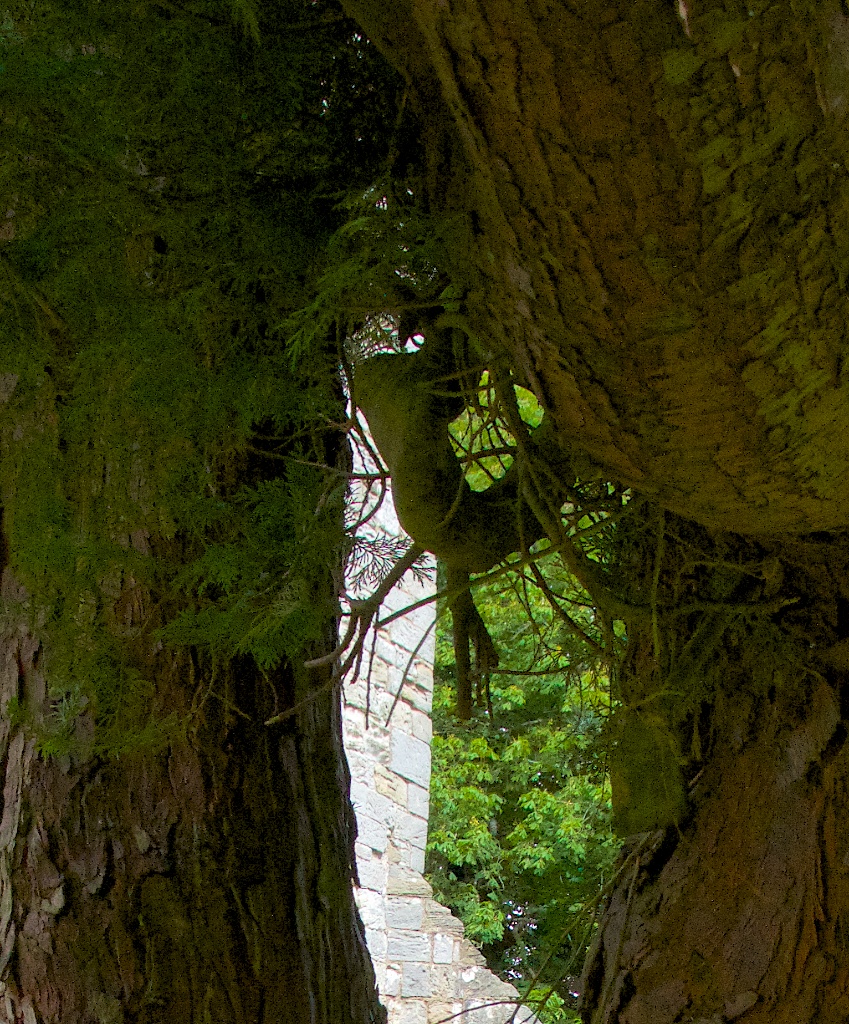
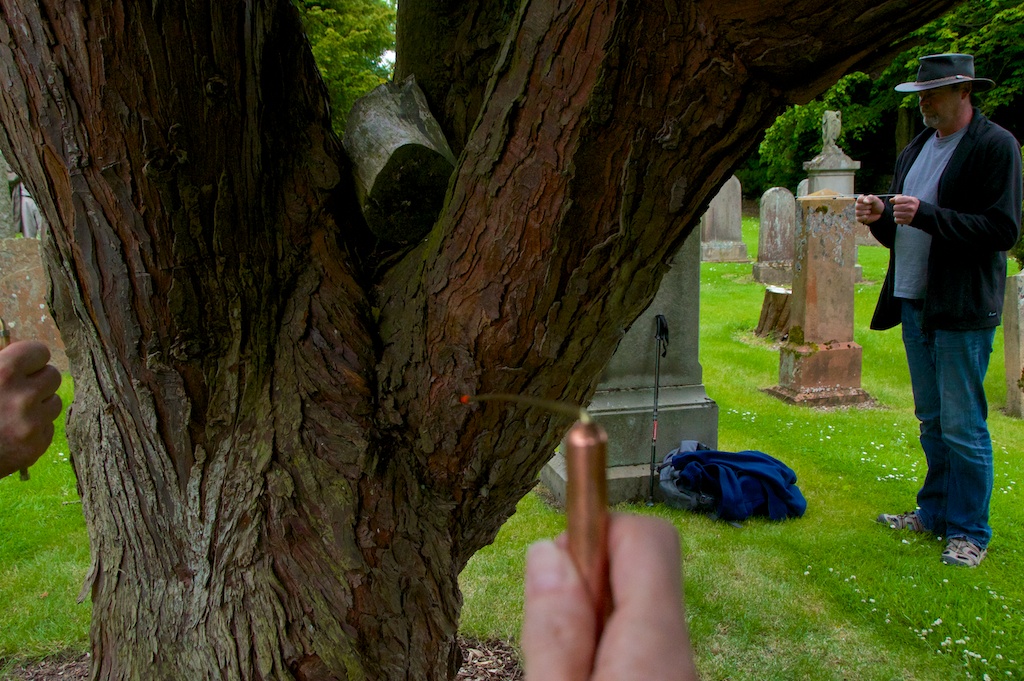
A wedding was being held in the Preceptory, so we had to wait until the next day before venturing inside the building. Here, I discovered the strange and rather draining feeling of standing right on top of the blind spring in the south transept. As we were practising crossing and re-crossing the spring, Grahame’s aurameter was quietly picking up on some other energy in that area, which he followed and found to take the form of a Maltese cross: quite appropriate, considering that the Preceptory was once the Scottish home of the Hospitallers of St John! To dowsers this energy is known as a ‘manifestation’, a kind of by-product left behind after centuries of visualisation by worshippers in the church; to my mind, it is akin to a memory being held within the building.
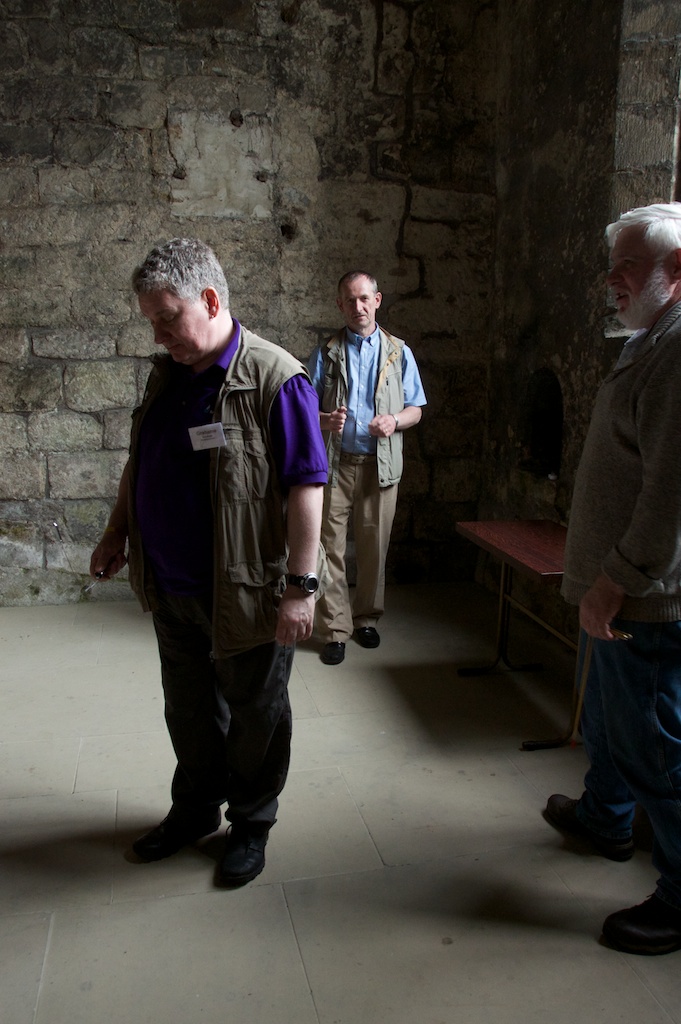
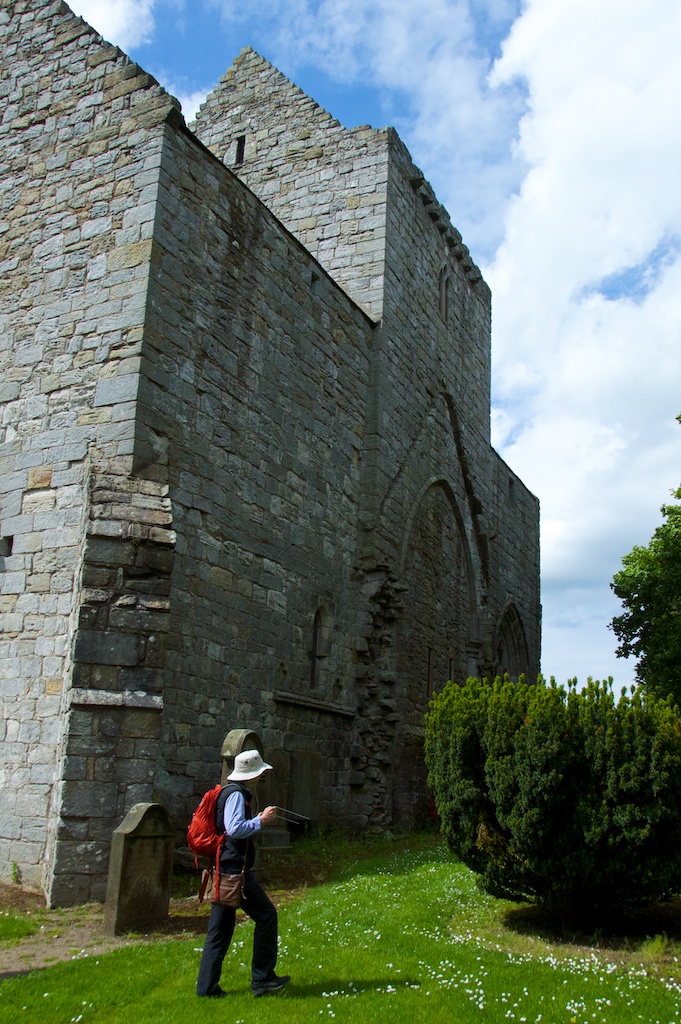 As I’ve explained in my earlier post, the Preceptory at Torphichen has a missing choir, which is what gives it that weird truncated shape. It’s thought that this is where the original early Christian church would have stood. But if that’s the case, why do the energy lines converge in the south transept, which was added later? The answer is that they have probably moved, as the focus of worship changed. Energy lines seem to behave in the same way as a river, which is constantly shaping and re-shaping its meanders through a flood plain.
As I’ve explained in my earlier post, the Preceptory at Torphichen has a missing choir, which is what gives it that weird truncated shape. It’s thought that this is where the original early Christian church would have stood. But if that’s the case, why do the energy lines converge in the south transept, which was added later? The answer is that they have probably moved, as the focus of worship changed. Energy lines seem to behave in the same way as a river, which is constantly shaping and re-shaping its meanders through a flood plain.
Our experience here was further enhanced by a talented guide called Liam, who brought his Irish pipes into the church and showed us just how a medieval hymn could swell and resonate in the great hollow space. It was wonderful to hear, and it immediately added a different dimension, bringing a stone-cold building back to life and reminding me that these great churches were designed not just for the eyes but for their acoustic properties.
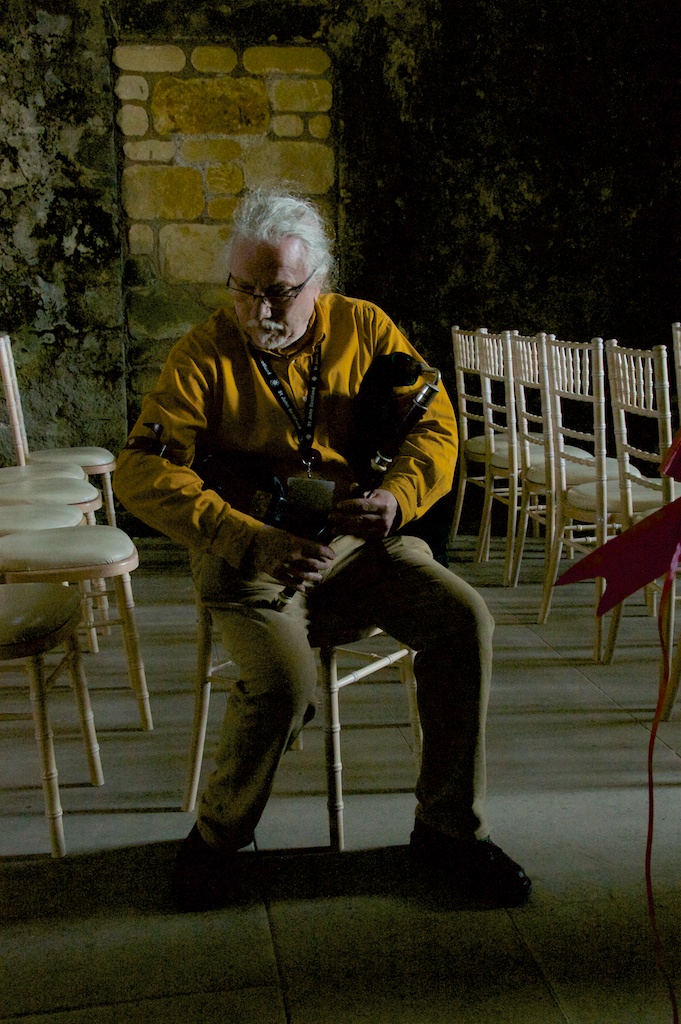 The rain held off for our walk up Cairnpapple Hill, an important Neolithic and early Bronze Age site whose burial cairn, once topped with a capstone, has now been covered with a concrete dome to protect it from the elements. You can climb down a vertical metal ladder into the chamber, where a large upright stone marks the main grave. I spent just a few minutes in here before getting the distinct impression that I should leave, which I did.
The rain held off for our walk up Cairnpapple Hill, an important Neolithic and early Bronze Age site whose burial cairn, once topped with a capstone, has now been covered with a concrete dome to protect it from the elements. You can climb down a vertical metal ladder into the chamber, where a large upright stone marks the main grave. I spent just a few minutes in here before getting the distinct impression that I should leave, which I did.
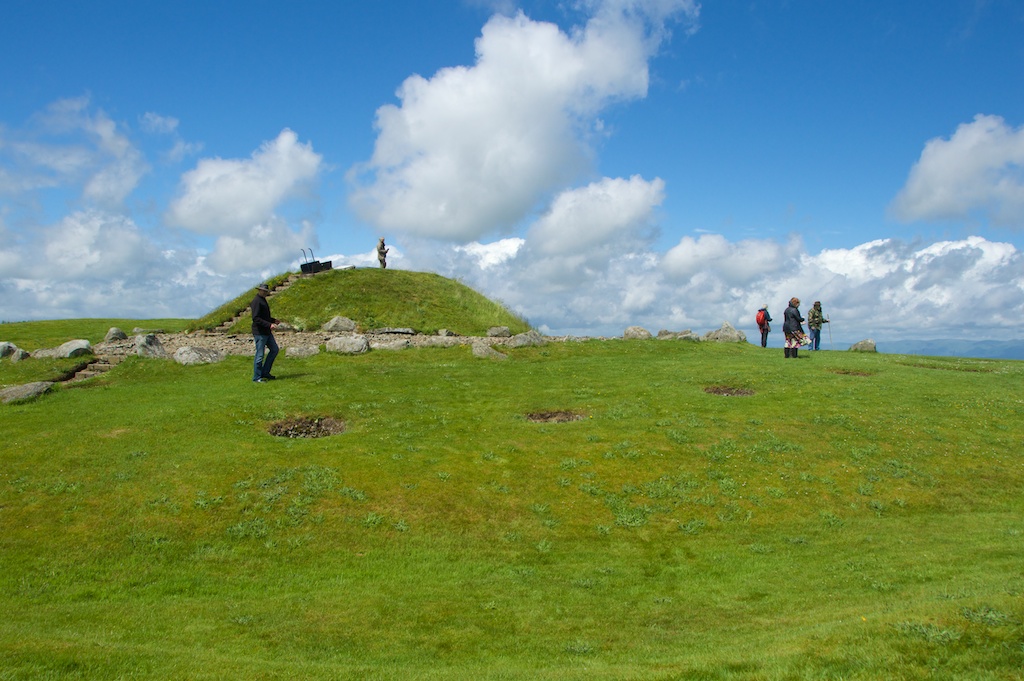
NATURAL GEOMETRY
Cairnpapple Hill lies on an important east-west axis that runs through Arthur’s Seat in Edinburgh to Traprain Law in East Lothian. All are natural hills, but Cairnpapple and Traprain Law are almost equidistant from Arthur’s Seat. At the spring and autumn equinox, a viewer on Arthur’s Seat would see the sun rise over Traprain Law and set over Cairnpapple Hill.
Quite widely spaced around the summit of Cairnpapple is a ring of 24 post holes, marking the position of a late Neolithic timber henge. The whole site is surrounded by a circular ditch and a low bank with entrances to the south-east and north-east. But, as Grahame pointed out, if it had been designed for defence, the ditch would surely have been on the outside of the bank. So what was the ditch for?
This is where Grahame, and his buddy, Tom, pulled a new card out of their sleeves, metaphorically of course. After walking up and down for a few minutes they diagnosed a toroid, and then they stood and looked at it in quiet admiration, like two blokes with a Harley Davidson. Failing to see anything except grass and daisies, I demanded to be shown the toroid, and they immediately sprang back into teacher mode, so that they could help me find it for myself. Could I see it? Yes, kind of. My rods certainly could.
They explained that a toroid is a ring of energy, three-dimensional and shaped like a flattish doughnut with a hole in the middle. The lower part of it was resting in the ditch, which might have been shaped just for that purpose, and it ran all around the summit cairn. Why? Possibly to divert a major earth energy line which was coming in from a distant hill, so that it had less of an impact on any ceremonies that might have taken place at Cairnpapple. So, I asked, was there any earth energy on the inside of the toroid? Grahame felt that this was a good question, and took himself off to look for a Hartmann Grid, so that he could attempt to answer it.
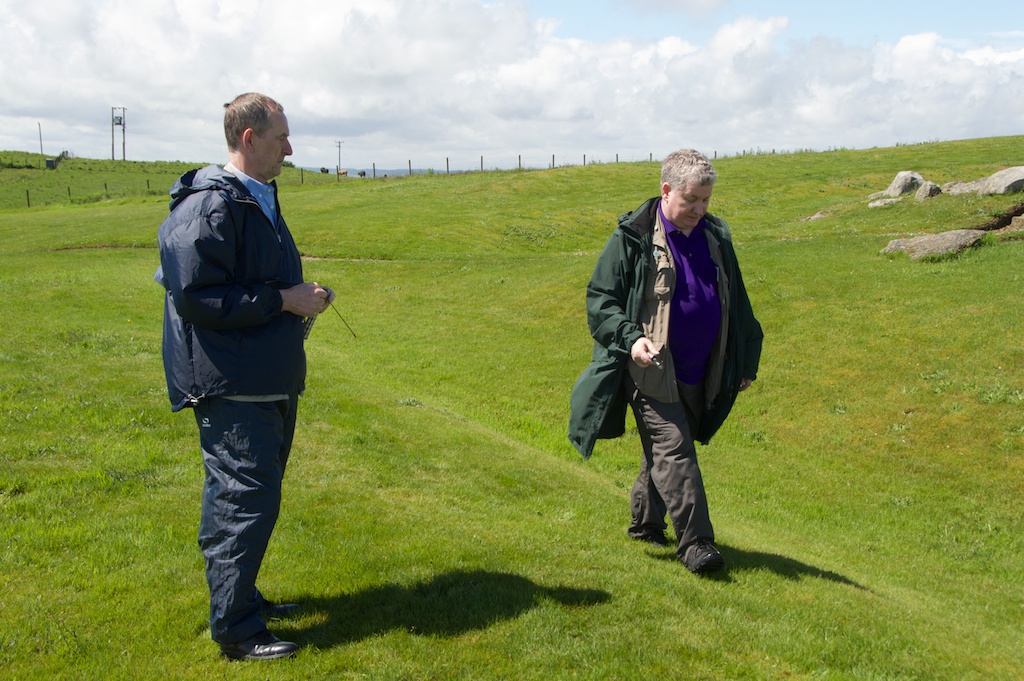
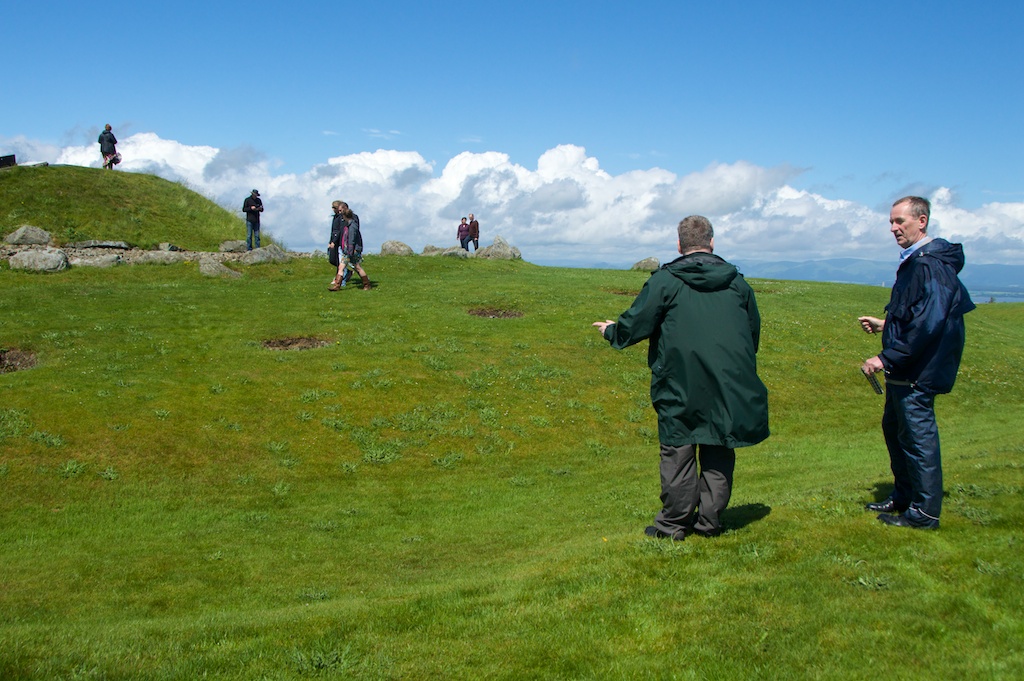
 Meanwhile, I rested my new-found skills for a few seconds in contemplation of the surroundings, which were beautiful. Skylarks were pouring out their rapturous songs as they parachuted down to earth; on all sides, the rolling green countryside of the Lothians stretched outwards before dissolving into a bluish haze; and the ground, still damp from recent rain, seemed to bask gratefully in the warm sunshine.
Meanwhile, I rested my new-found skills for a few seconds in contemplation of the surroundings, which were beautiful. Skylarks were pouring out their rapturous songs as they parachuted down to earth; on all sides, the rolling green countryside of the Lothians stretched outwards before dissolving into a bluish haze; and the ground, still damp from recent rain, seemed to bask gratefully in the warm sunshine.
Three American visitors had noticed our activity – it would have been hard not to – and were genuinely intrigued, the older gentleman even having a go himself with some rods, and being delighted with the result. Around the other side of the summit, the young woman – his daughter, I think – approached me tentatively and asked what I was doing. Since I was not entirely sure on a logical level, I surprised myself with the confidence of my answer. At this point I realised that I was quite comfortable with dowsing, and in fact I wanted to learn more. All I need to do now is practise.
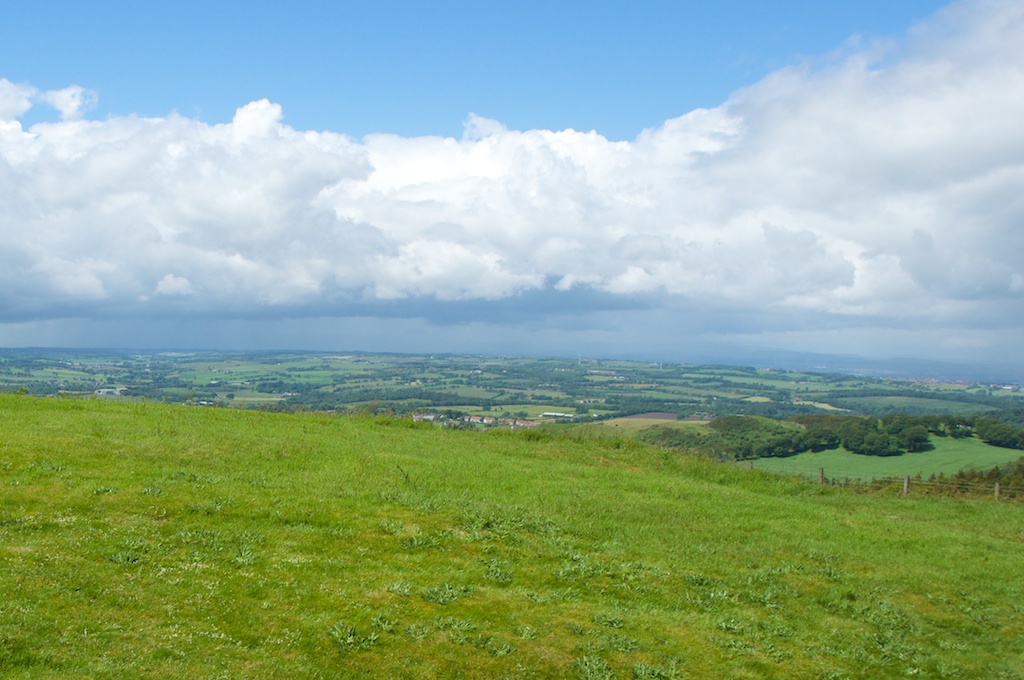 I should emphasise that the course I’d chosen was the next step up from a beginner’s course, and I didn’t try to absorb everything at once; there was a lot to take in, purely because the possibilities with dowsing are endless. You can even dowse on a map, although for me this skill is very much a work in progress.
I should emphasise that the course I’d chosen was the next step up from a beginner’s course, and I didn’t try to absorb everything at once; there was a lot to take in, purely because the possibilities with dowsing are endless. You can even dowse on a map, although for me this skill is very much a work in progress.
Grahame is an intuitive teacher, and as a former President of the British Society of Dowsers he is dedicated to passing on the principles and best practices of this ancient art. The atmosphere was relaxed and friendly and welcoming. I was sorry that it had to end! My sincere thanks to Grahame, his partner, Elspeth, and to everyone else on the course for such a lovely experience.
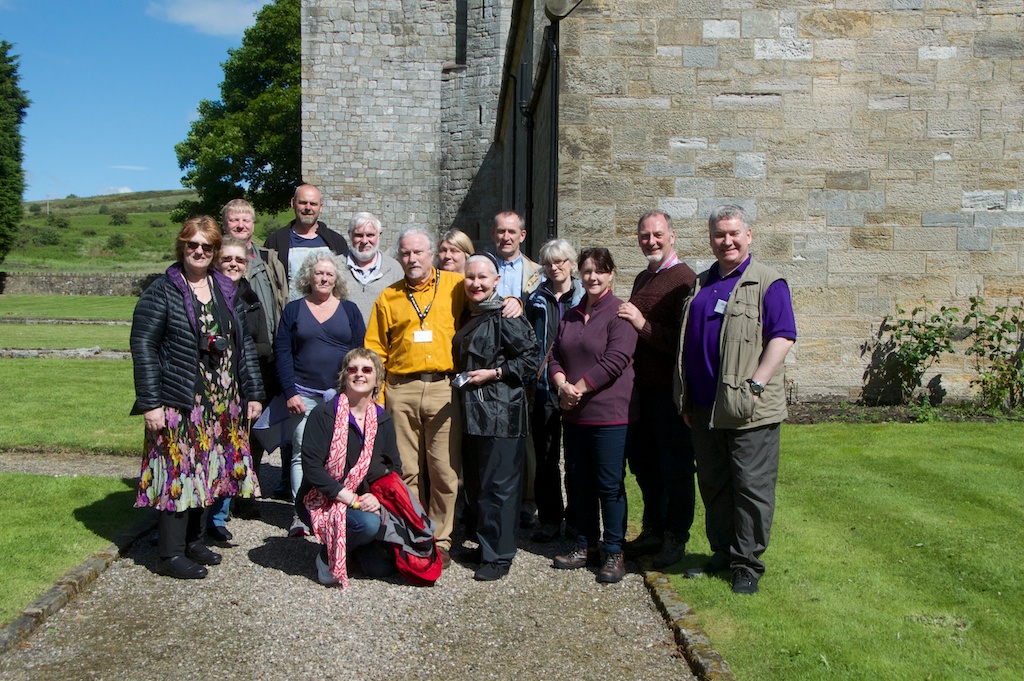
 Will I continue with dowsing? Yes, is the answer. When I booked this course, I didn’t realise just what it might open up. Dowsing teaches you to see the earth very much as a living being; and when you do this, everything else makes perfect sense. It will enhance my intuition about the places that I visit, and it has given me an even deeper respect for our ancestors, whose wisdom and connection with the earth knew no boundaries.
Will I continue with dowsing? Yes, is the answer. When I booked this course, I didn’t realise just what it might open up. Dowsing teaches you to see the earth very much as a living being; and when you do this, everything else makes perfect sense. It will enhance my intuition about the places that I visit, and it has given me an even deeper respect for our ancestors, whose wisdom and connection with the earth knew no boundaries.
“The earth energy system is its nervous and meridian system… the same as ours but much more complex. It’s a cobweb of energy lines all over the surface, and under and above the earth… we are cosmically connected to everything else in the universe.”
Hamish Miller, ‘The Spirit of the Serpent‘
TRY IT FOR YOURSELF!
If you are interested enough to find out more, I’d advise you to go on a course organised by Western Geomancy or another member of the British Society of Dowsers. You could also look at Grahame’s book for beginners, ‘Dowsing Magic‘, which is available on his website (you can buy it together with some L-rods for £30).
Grahame also offers services for people suffering from technopathic stress, caused by over-exposure to the electromagnetic radiation from computers and other devices; and he will help to ‘heal’ your home or building if it is experiencing the effects of negative energy.
Photos copyright © Jo Woolf
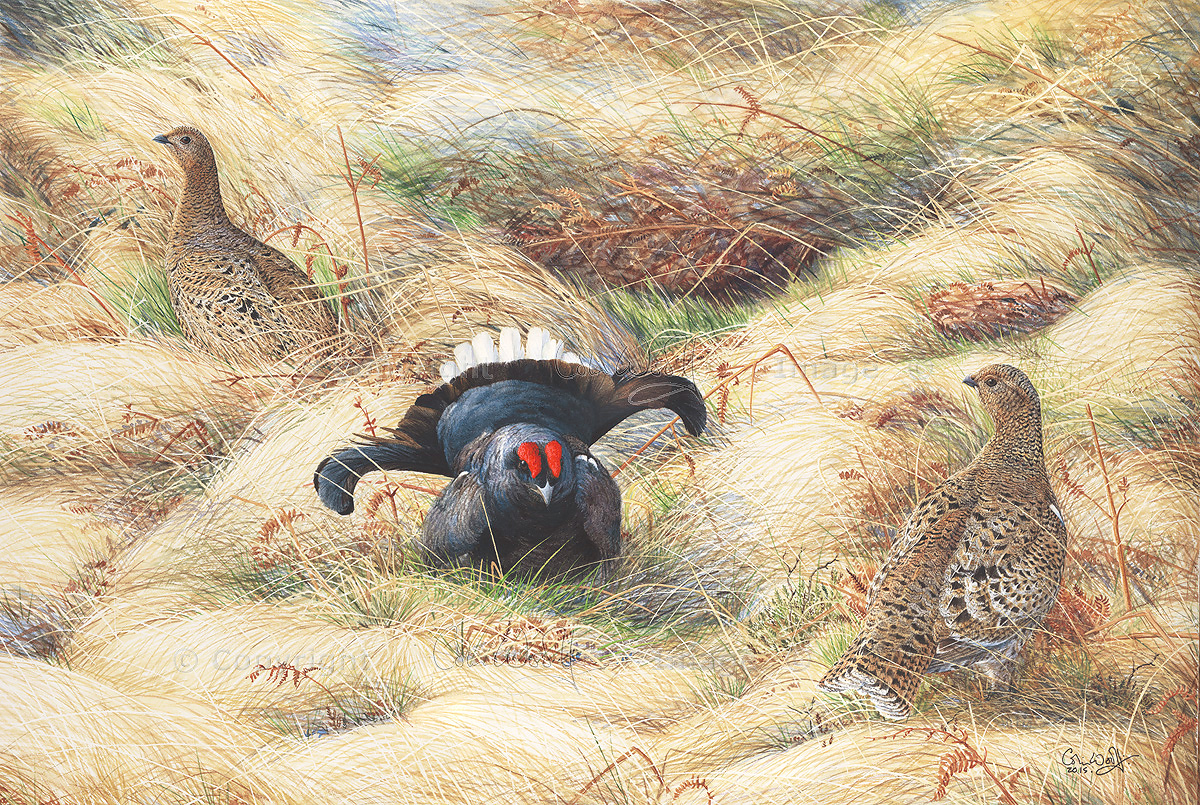
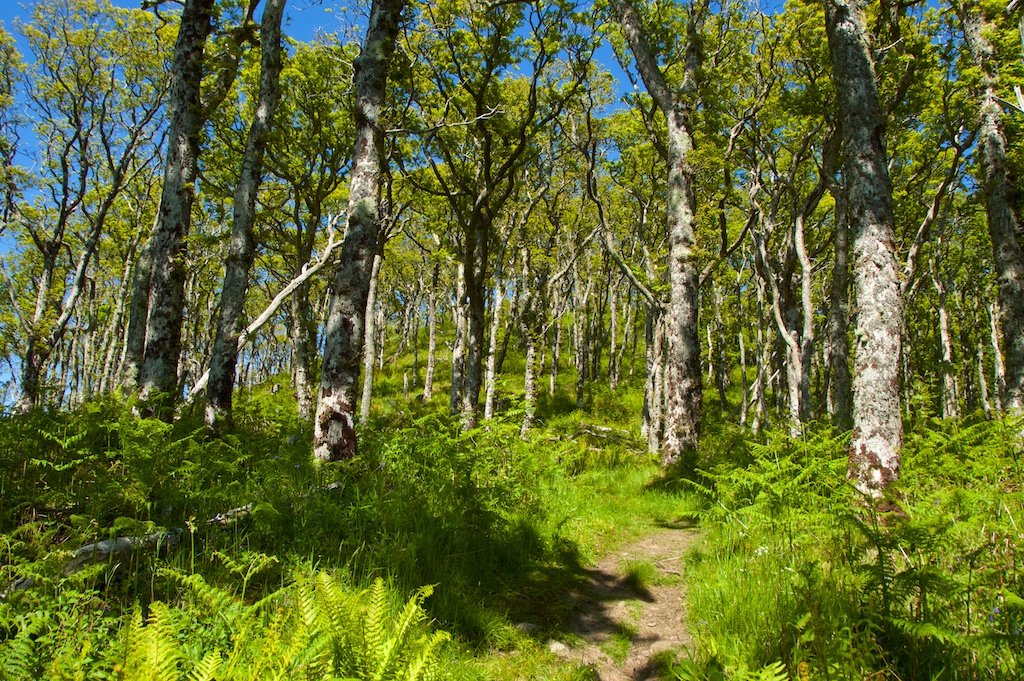

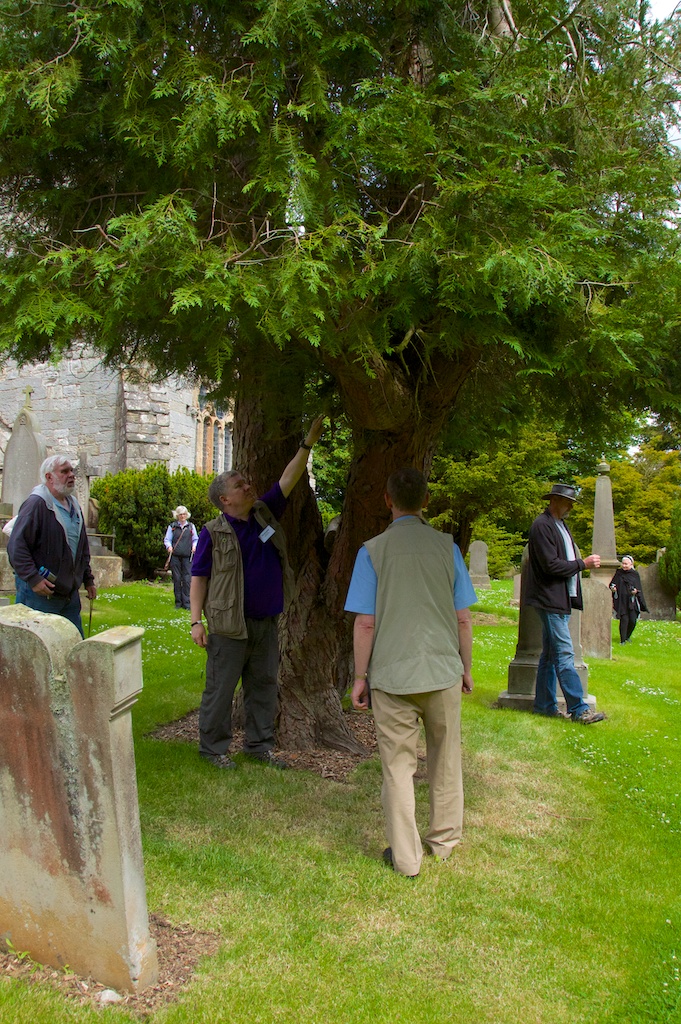
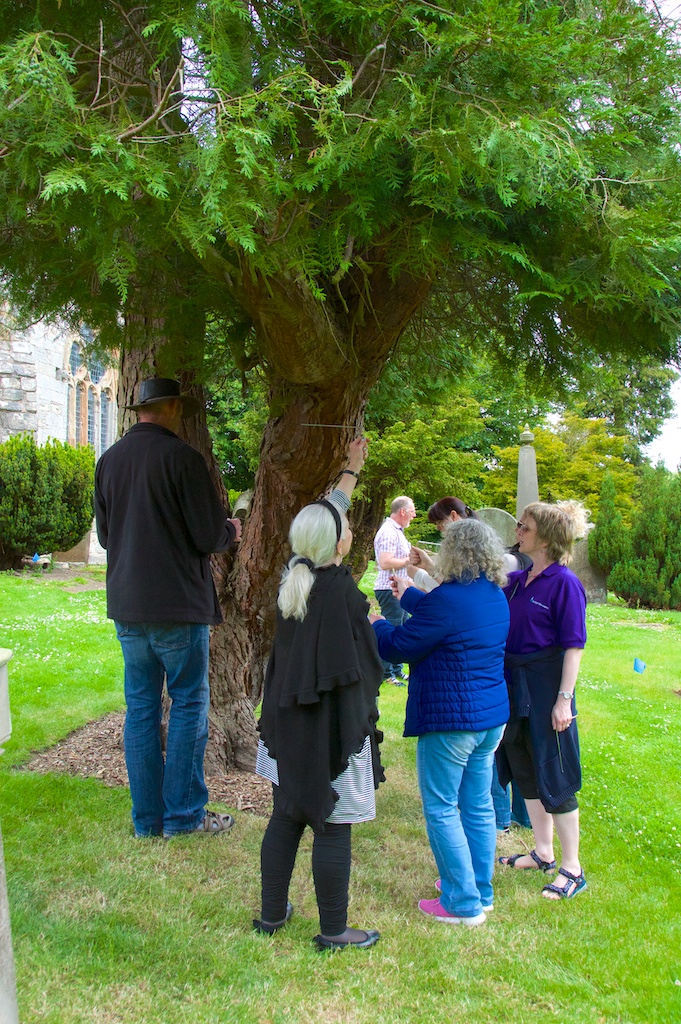

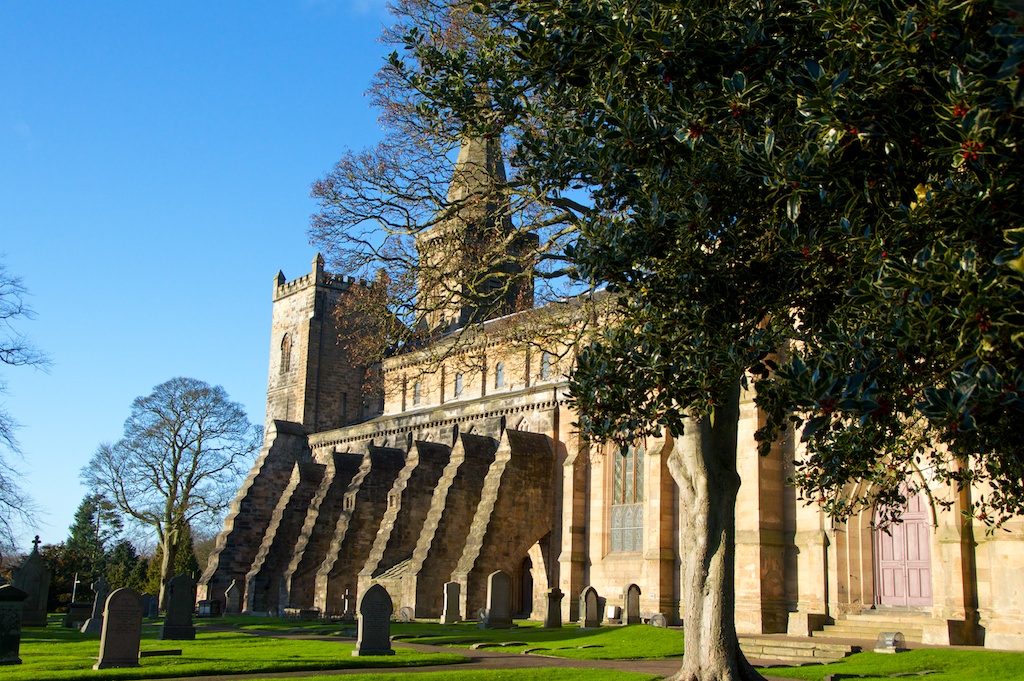
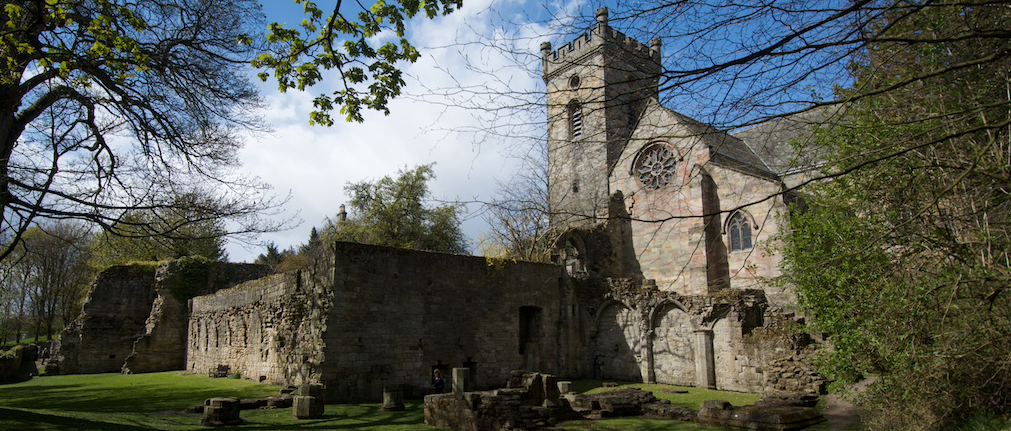
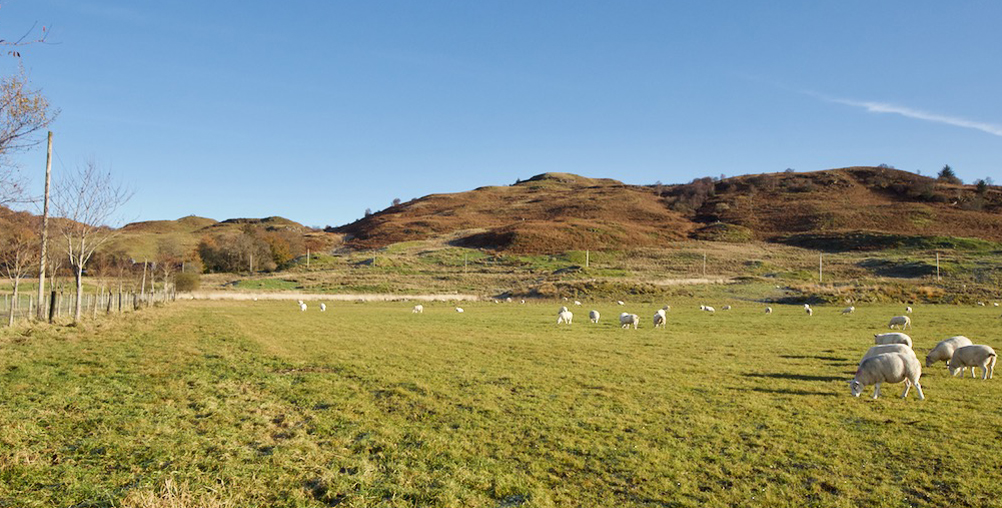
17 Comments
justbod
What a lovely article and a fascinating experience! Dowsing is something I read a lot about, several years ago, and was going to have-a-go at, but then life took over. Thank you for the article, and for reminding me…I might just put it back on the list…
Jo Woolf
Thank you so much, Justbod! Aah, you really should give it a go! You can experiment with finding the energy field of trees, and actually interact with it. It’s just amazing, the potential. I am barely starting. If you get a chance, watch Hamish Miller’s ‘The Spirit of the Serpent’. It’s eye-opening.
justbod
Thanks Jo!
davidoakesimages
Thanks for the article…great. I always wonder why we doubt Dowsing, the validity of Ley Lines and the strategic location of Stone Circles, Burial Sites (Barrows Cairns,etc) and the key religious settlements around the world. There are far too many coincidences for there not to be some substance to what has happened over the millenia.
Jo Woolf
David, you are so right. There is no coincidence – the ancients knew far more than we ever give them credit for. The more I learn about dowsing, the more all the pieces seem to fit into place – and I’ve barely scratched the surface!
Scott Marshall
This is a brilliant post – extremely informative and encouraged me to add to my to-do list etc I have spent a lot of time in and about Brochs stone circles which didn’t have my attention in earlier life but are becoming much more central as I start to understand better the landscape that I photograph.
Jo Woolf
Thank you very much, Scott! So glad you are inspired to find out more! If you do, I am sure it will give you a new perspective on the landscape.
fivefunfacts
It sounds as if it was a fun weekend. Interesting that there were roughly equal numbers of male and female participants and that most of them had done some dowsing before. I wonder how they all get into it.
Jo Woolf
It was fun, Lorna (guessed it was you – I like the idea for your new blog!) I do not know how all the participants came into dowsing – through very varied routes, I would imagine. Some are already healers.
fivefunfacts
Well spotted. 🙂 I had forgotten I was logged in under this alter ego. Thanks for following the blog, I didn’t want to mention on my Tearoom blog that I’d started yet another one in case it goes the way of most of my enthusiasms…
christinelaennec
Jo that was absolutely fascinating! I’m so glad you had a chance to do this course, and thank you for sharing with us. My dowsing for water has been limited to my back garden in Aberdeen – where the results were very convincing. As you say, dowsing can be used for so many different things, and one talented healer I know uses a small crystal pendulum to diagnose energy blockages in the body. It makes perfect sense to me. If the earth has these lines of flowing energy, why not our bodies?
Jo Woolf
Thank you, Christine! 🙂 I am so glad you enjoyed this. I need to do more practice now! It does indeed make perfect sense. I came to it the other way around – from being familiar with the chakras in a healing sense, although I’ve never (yet) tried to use a pendulum in this way. It is fascinating how drilling companies still rely on dowsers, who can not only pinpoint water supplies but accurately predict the depth and volume in terms of gallons per hour.
Jim Porter
Great write up Jo, just as it was, a really enjoyable weekend and as you say a lot to take in.
Jo Woolf
Thank you, Jim! Glad you thought so. Yes, I feel as if stuff is still sinking in at some level! 🙂
Richard Strathie
What a great article. I have a friend who discovers a lot of archaeology by divining and we made a film of him here :- http://www.borderarchaeology.co.uk/home/divining
Jo Woolf
Fantastic, Richard! I enjoyed watching that. Dowsing is truly amazing, even though science cannot fully explain it. I can tell you, this has opened up so many questions for me, and I am more fascinated with every video I see, or article that I read. Walter Elliott looks as if he just uses a pair of straightened coat-hangers. They all do the same job! Thank you very much for your comment, and for sharing this.
grahamegardner
Great video Richard – I hadn’t seen that for a while. The BSD shop still sells Walter’s book as part of a ‘dowsing for archaeology’ kit: https://www.britishdowsers.org/shop/dowsing-kits/book-pendulum-and-rods-kits/archaeology-kit/